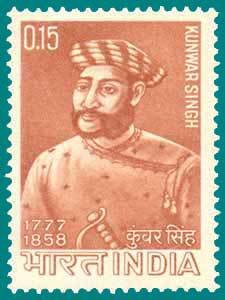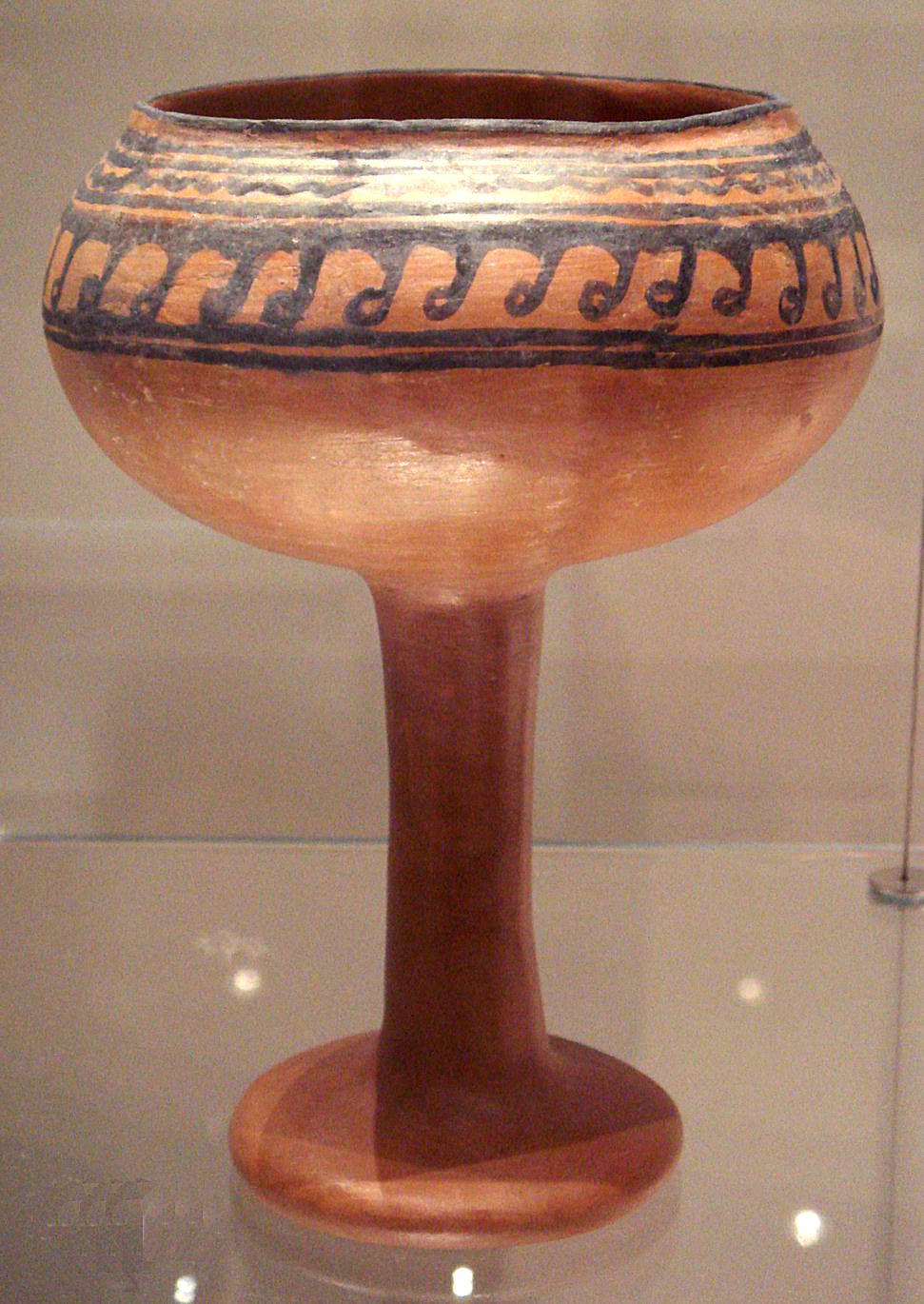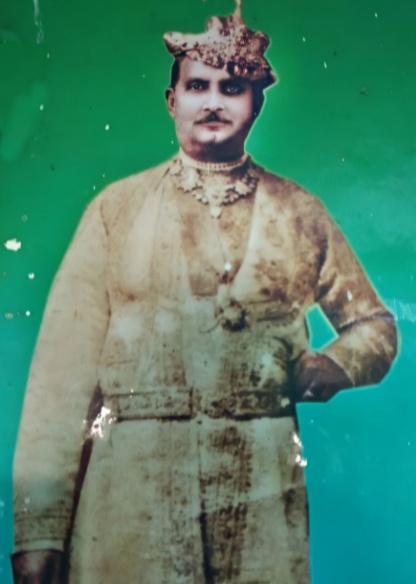|
Bihari Rajput
Rajputs in Bihar are members of the Rajput community living in the eastern Indian state of Bihar. They traditionally formed part of the feudal elite in Bihari society. Rajputs were pressed with the Zamindari abolition and Bhoodan movement in post-independence India; along with other Forward Castes, they lost their significant position in Bihar's agrarian society, leading to the rise of Other Backward Classes (OBCs). History From 1200 CE, many Rajput groups moved eastwards towards the Eastern Gangetic plains, forming their own chieftaincies. These minor Rajput kingdoms were scattered across the Gangetic plains of modern-day Uttar Pradesh and Bihar. During this process, petty clashes with Native populations occurred and in some cases, alliances were formed. Among these Rajput chieftaincies were the zamindars of Bhojpur and the taluks of Awadh. The immigration of Rajput clan chiefs into these parts of the Gangetic Plains also contributed to the agricultural appropriation of pre ... [...More Info...] [...Related Items...] OR: [Wikipedia] [Google] [Baidu] |
Rajput
Rājpūt (, from Sanskrit ''rājaputra'' meaning "son of a king"), also called Thākur (), is a large multi-component cluster of castes, kin bodies, and local groups, sharing social status and ideology of genealogical descent originating from the northern part of the Indian subcontinent. The term ''Rajput'' covers various patrilineal clans historically associated with warriorhood: several clans claim Rajput status, although not all claims are universally accepted. According to modern scholars, almost all Rajput clans originated from peasant or pastoral communities. Over time, the Rajputs emerged as a social class comprising people from a variety of ethnic and geographical backgrounds. From the 12th to 16th centuries, the membership of this class became largely hereditary, although new claims to Rajput status continued to be made in later centuries. Several Rajput-ruled kingdoms played a significant role in many regions of central and northern India from the seventh century ... [...More Info...] [...Related Items...] OR: [Wikipedia] [Google] [Baidu] |
Sher Shah Suri
Sher Shah Suri (born Farid al-Din Khan; 1472 or 1486 – 22 May 1545), also known by his title Sultan Adil (), was the ruler of Bihar from 1530 to 1540, and Sultan of Hindustan from 1540 until his death in 1545. He defeated the Mughal Empire, founding the Sur Empire and establishing his rule in Delhi. The influence of his innovations and reforms extended far beyond his brief reign, being recognized as one of the greatest administrative rulers in India. During his time in power, he remained undefeated in battle and is renowned as one of the most skillful Afghan generals in history. By the end of his reign, his empire covered nearly all of Northern India. Born between 1472 and 1486 and given the name Farid Khan, his early childhood saw him flee from home due to internal family strife. He pursued an education in Jaunpur, where his rise to power began after his father offered him a managerial position over his jagirs. Sher Shah effectively governed these territories, gaining a ... [...More Info...] [...Related Items...] OR: [Wikipedia] [Google] [Baidu] |
Koor Sing, 'The Rebel Of Arrah,' And His Attendants
KOOR (1010 AM "Urbana 1010") is a commercial radio station licensed to Milwaukie, Oregon, and serving the Portland metropolitan area. The station is owned by Bustos Media and the broadcast license is held by Bustos Media Holdings, LLC. It airs a Spanish language rhythmic contemporary radio format. KOOR is a daytimer station. From dawn to dusk, it is powered at 4,500 watts. But because 1010 AM is a Canadian clear channel frequency, at night it must go off the air to avoid interference. KOOR is permitted to operate at 1,100 watts during critical hours. History Z-Rock, talk and sports The station was assigned the call letters KRKX on August 22, 1983. On February 28, 1988, the station changed its call sign to KZRC. While having this call sign, it was affiliated with the radio network "Z Rock," which played hard rock and heavy metal music. It stayed with Z Rock for six years. From 1994 to 1999, its call sign was KXYQ. It featured a talk and sports format until mid-1998. ... [...More Info...] [...Related Items...] OR: [Wikipedia] [Google] [Baidu] |
Kunwar Singh
Veer Kunwar Singh, also known as Babu Kunwar Singh was a chief organiser of the Indian Rebellion of 1857 from the Bhojpur region of Bihar. He was originally the ruler of Jagdishpur estate. He led a selected band of armed soldiers against the troops under the command of the British East India Company. The Indian Air Force conducted an air show using fighter jets on the occasion of Vijay Divas of Kunwar Singh on 23 April 2025. It was attended by several dignitaries including Governor of Bihar and Chief Minister of Bihar. Early life Kunwar Singh was born on 13 November 1777 in Rajput family to Raja Sahabzada Singh and Panchratan Devi, in Jagdishpur in the Indian state of Bihar. He belonged to a cadet branch of the Ujjainiya dynasty which ruled the Jagdishpur principality. A British judicial officer offered a description of Kunwar Singh and described him as "a tall man, about seven feet in height". He went on to describe him as having a broad face with an aquiline nose. In t ... [...More Info...] [...Related Items...] OR: [Wikipedia] [Google] [Baidu] |
Indian Rebellion Of 1857
The Indian Rebellion of 1857 was a major uprising in India in 1857–58 against Company rule in India, the rule of the East India Company, British East India Company, which functioned as a sovereign power on behalf of the The Crown, British Crown. The rebellion began on 10 May 1857 in the form of a mutiny of sepoys of the company's army in the garrison town of Meerut, northeast of Delhi. It then erupted into other mutinies and civilian rebellions chiefly in the Ganges Basin, upper Gangetic plain and central India, though incidents of revolt also occurred farther north and east. The rebellion posed a military threat to British power in that region, and was contained only with the rebels' defeat in Gwalior on 20 June 1858., , and On 1 November 1858, the British granted amnesty to all rebels not involved in murder, though they did not declare the hostilities to have formally ended until 8 July 1859. The Names of the Indian Rebellion of 1857, name of the revolt is contested, an ... [...More Info...] [...Related Items...] OR: [Wikipedia] [Google] [Baidu] |
Malwa
Malwa () is a historical region, historical list of regions in India, region of west-central India occupying a plateau of volcanic origin. Geologically, the Malwa Plateau generally refers to the volcanic plateau, volcanic upland north of the Vindhya Range. Politically and administratively, it is also synonymous with the former state of Madhya Bharat which was later merged with Madhya Pradesh. At present the historical Malwa region includes districts of western Madhya Pradesh and parts of south-eastern Rajasthan. Sometimes the definition of Malwa is extended to include the Nimar region south of the Vindhya Range, Vindhyas. The Malwa region had been a separate political unit from the time of the ancient Malava Kingdom. It has been ruled by several kingdoms and dynasties, including the Avanti (India), Avanti Kingdom, The Maurya Empire, Mauryans, the Malavas, the Gupta Empire, Guptas, the Paramara dynasty, Paramaras, The Rajput, Rajputs, the Delhi Sultanate, the Malwa Sultanate, M ... [...More Info...] [...Related Items...] OR: [Wikipedia] [Google] [Baidu] |
Sonbarsa Raj
The Sonbarsa Raj was a medieval chieftaincy and later a zamindari (estate) during British Raj in modern-day Bihar, in erstwhile Bhagalpur district (now in Saharsa). It was controlled by the Gandhavariya Rajputs. The grants and sanad shows that Gandhavariyas were important Rajas under the Mughals in sarkar Tirhut. Beside Sonbarsa, the Gandhavarias landlords were found in Baruari, Parsarma, Barail, Sokhpur, Jadia, Basantpur, Durgapur, Sukhsena, Bhatattan, Panchgachhia etc. The Zamindari estate of Mangwar established by Babu Bhagwan Singh also belongs to the Gandhavaria clan, whose descendants Babu Sagar Prasad Singh lives there. History Sonbarsa Raj was founded by Raja Ranjit Singh in the present district of Saharsa. It became a powerful and large estate in the region. The Sonbarsa Raj family traces its origin from Raja Vikramaditya of Ujjain and belongs to the Agni branch of Kshatriya. The Sonbarsa raj originated in 1654, when the Mughal emperor Aurangzeb granted the t ... [...More Info...] [...Related Items...] OR: [Wikipedia] [Google] [Baidu] |
Gandhavariya
The Gandhavariya (also known as Gandhawariya and Gandhawaria) are a Rajput clan based in northern Bihar. In past they ruled over parts of Madhepura district and Saharsa district during medieval times after the decline of the Oiniwar Dynasty. Origin One of the theories put forward about the origins of the Gandhavariyas is that they originate from a branch of the Karnat dynasty of Mithila that remained in the region after the Karnat king, Harisimhadeva fled to Kathmandu following the invasion of Ghiyasuddin Tughlaq. History The writer Jyotirishwar Thakur recorded the existence of the ''Gandhavariyas Rajaputas'' in his 14th century book ''Varṇa Ratnākara'' and detailed how they held sway over much of North Bihar. The traditions of the Gandhavariyas record that prior to their ascendancy in the region, they were engaged in a war with the Bhar who the Gandhavariyas claim to have finished. The zamindari estate of Sonbarsa Raj was established by Raja Ranjit Singh who belonged to ... [...More Info...] [...Related Items...] OR: [Wikipedia] [Google] [Baidu] |
Kharagpur Raj
Kharagpur Raj was a prominent chieftaincy, founded in the early 16th century in Bihar situated mainly in modern-day Munger district. They were notable for being one of the few chieftaincies in Bihar to convert to Islam and many of the rulers became firm allies of the Mughal Empire, Mughal authorities. At its peak, the Kharagpur Raj encompassed parts of the modern-day districts of Munger district, Munger, Bhagalpur district, Bhagalpur, Jamui district, Jamui, Lakhisarai district, Lakhisarai, Godda district, Godda and Deoghar district, Deoghar. Due to its size, the Privy Council compared it with the Kingdom of Sardinia. Origins The chieftaincy of Kharagpur Raj was founded by the Hindu Kinwar Rajput, Babu Dandu Rai in 1503. The original rulers of this region were the Khetauris. 3 Rajput brothers, Babu Dandu Rai, Basdeo Rai and Mahender Rai from Bhojpuri region, Bhojpur arrived in the region and worked for the Khetauri chief, Raja Sasanka. These three brothers eventually amassed a large ... [...More Info...] [...Related Items...] OR: [Wikipedia] [Google] [Baidu] |
Namudag Raj
Namudag is a village and was an erstwhile estate in the Chhatarpur Block, Palamu district, Jharkhand state, India. Location It is located 48 km north of the district headquarters, Daltonganj; 12 km from Chhattarpur; and 177 km from the state capital, Ranchi. Namudag's Pin code is 822113 and the postal head office is Chhatarpur. Marwa (4 km), Munkeri (5 km), Khairadohar (6 km), Bara (6 km), Mahuwari (7 km) and Karkata (7 km) are the nearby villages. Namudag is adjacent to Dumaria Block to the north, Patan Block to the south, Hariharganj Block to the north, and Kutumba Block to the north. Hussainabad, Daltonganj, Aurangabad, and Garhwa are nearby cities. This village is on the border of the Palamu District and the Aurangabad district, near the Bihar Bihar ( ) is a states and union territories of India, state in Eastern India. It is the list of states and union territories of India by population, second largest state by p ... [...More Info...] [...Related Items...] OR: [Wikipedia] [Google] [Baidu] |
Deo Raj
Deo Raj, was a zamindari (estate) situated in what is now Aurangabad district of Bihar. The Deo Raj family were notable for being the protectors of Deo Sun shrine (Deo Surya Mandir). The dynasty came to an end in 1934, as Jagannath Prasad Singh Kinkar, its last ruler, died without leaving a descendant. Origins During either 14th or 15th century, there was a migration of Sisodia Rajputs from Mewar to South Bihar. These migrant Rajputs, along with local Hindu rulers, played a significant role in renovating and maintaining numerous Hindu shrines and temples. The region contains a 15th-century inscription that records the dedication of a temple by King Bhairavendra. The inscription names twelve of his ancestors and suggests that the area was once under the rule of his dynasty. The migrant Deo Rajas eventually became the overlords of Umga through a matrimonial alliance with this lineage. The Deo Rajas were among a number of Rajput migrant groups to arrive in Southern Bihar and t ... [...More Info...] [...Related Items...] OR: [Wikipedia] [Google] [Baidu] |
Gidhaur Chieftaincy
The Gidhaur Chieftaincy was a principality which controlled parts of South Bihar for much of the early-modern period. The chieftaincy was ruled by the Rajput, Rajputs and its territory involved present day Jamui district, Deoghar district and part of Munger district. Origins The Gidhaur chieftaincy was founded by Bir Bikram Shah who was a Chandel (Rajput clan), Chandel Rajput. The family accounts detail that his family originally held a small chieftaincy in Mahoba in Bundelkhand but were driven out by various foreign incursions including the invasion of Mahmud of Ghazni. From here they arrived in the Rewa, Madhya Pradesh, Rewa area where they established the estate of Bardi. Bir Bikram Shah, who was the younger brother of the chief of Bardi, left his home and arrived in South Bihar where he established his power in the region by defeating the chief, Nagoria in 1262. From here, he continued to expand the extent of his chiefdom. The Gidhaur chiefs were part of a larger movement of ... [...More Info...] [...Related Items...] OR: [Wikipedia] [Google] [Baidu] |






